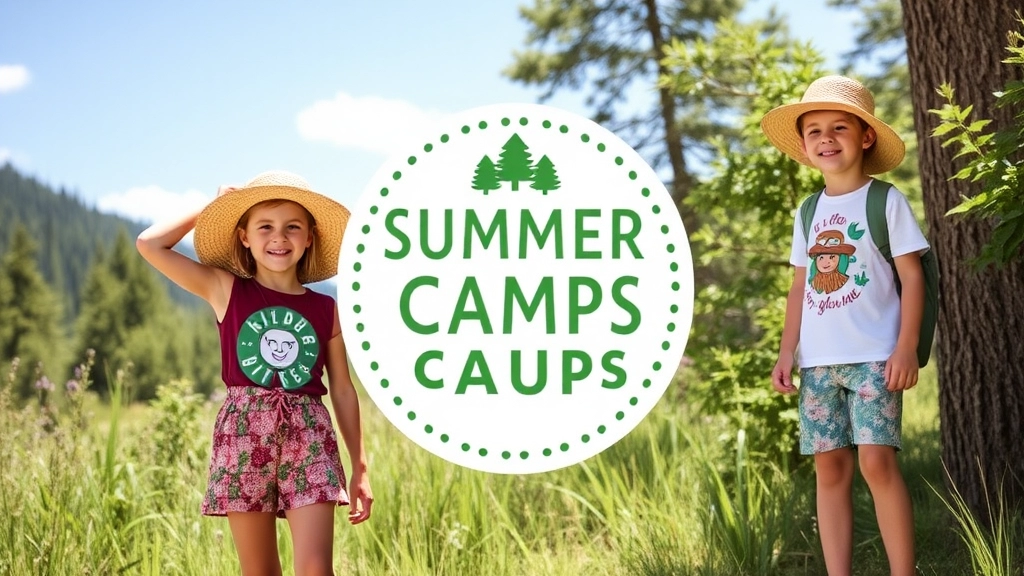Summer Camp Packing Guide
When it comes to summer camp, packing the right outfits can make or break your experience. From essential clothing items to the perfect footwear, this guide covers everything you need to know about summer camp outfits. Whether you’re prepping for hot days, rainy afternoons, or chilly evenings, we’ve got you covered with tips on layering, choosing quick-dry fabrics, and balancing style with functionality.
We’ll dive into must-have accessories, swimwear essentials, and even personal hygiene items to ensure you’re fully prepared. Plus, our packing tips will help you stay organized and hassle-free. So, let’s get started on making your summer camp adventure as comfortable and stylish as possible!
Essential Clothing Items for Summer Camp
Alright, let’s get real. When you’re prepping for summer camp, what’s the first thing that hits your mind? Is it “What do I even pack?” or maybe “How do I make sure I don’t forget anything crucial?” Trust me, we’ve all been there. Here’s the lowdown on essential clothing items for summer camp that’ll keep you comfy and ready for anything.
The Basics: What You Can’t Skip
First off, T-shirts and Shorts. These are your bread and butter for camp life. They’re comfy, easy to move in, and perfect for the hot days. Aim for a mix of short-sleeve and long-sleeve T-shirts. Long sleeves can be a lifesaver when the bugs come out to play.
Next, lightweight trousers or leggings. These are perfect for cooler evenings or if you’re heading into the woods. Plus, they give you that extra layer of protection against ticks and other creepy crawlies.
Keep it Fresh: Underwear and Socks
You’ll need a good stash of underwear and socks. Think about it: you’re active all day, sweating, maybe getting wet. You do not want to be stuck with damp socks or underwear. Pack enough to change daily, with a few extras for emergencies.
Layer Up: Hoodies and Jackets
Weather can be unpredictable. A lightweight hoodie or a fleece jacket is a must. They’re great for layering and can be easily packed away when not needed. If you’re heading somewhere where rain is a possibility, a rain jacket is non-negotiable. Trust me, nothing ruins a day faster than being soaked to the bone.
Sleep Tight: Pyjamas
Don’t forget your pyjamas. Whether you prefer shorts and a T-shirt or something a bit warmer, having dedicated sleepwear can make your nights more comfortable. Plus, it’s nice to have something clean to change into at the end of the day.
Special Mentions: Swimwear and Hats
Swimwear is a must if your camp has swimming activities. And a hatâwhether it’s a baseball cap or a wide-brimmed hatâwill keep the sun off your face and neck. Sunburn can ruin your fun real quick.
Quick Checklist
- T-shirts (short and long-sleeve)
- Shorts
- Lightweight trousers/leggings
- Underwear
- Socks
- Lightweight hoodie/fleece jacket
- Rain jacket
- Pyjamas
- Swimwear
- Hat
Remember, the key is to pack smart and pack light. You want to be prepared for anything without lugging around a ton of stuff. Think about what activities you’ll be doing and what the weather might be like, and pack accordingly.
For more tips on making your summer camp experience unforgettable, check out our guide on top sleepaway camps and how to set up a successful summer camp canteen.
Footwear: Choosing the Right Shoes
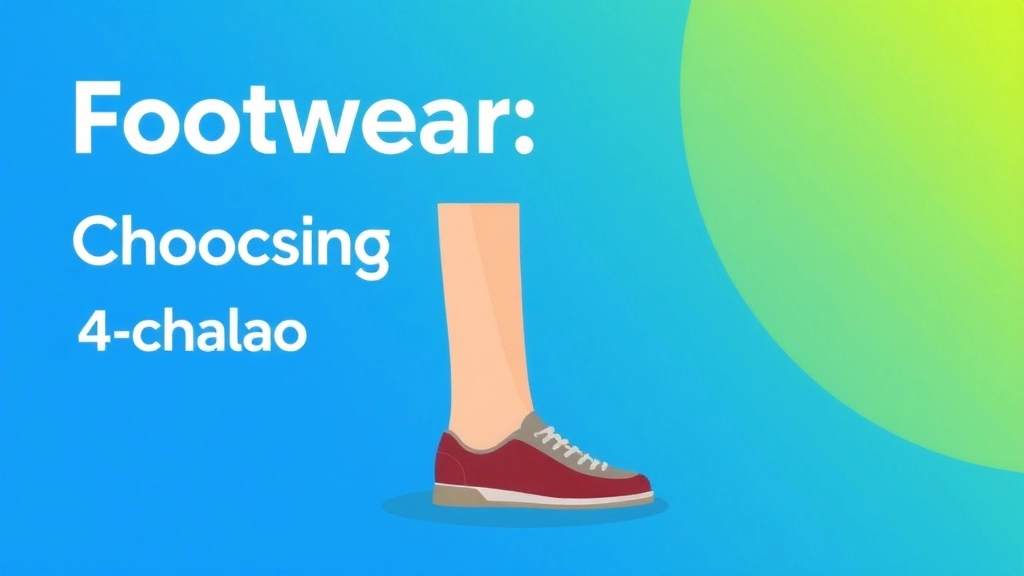
Ever wondered what shoes to pack for summer camp?
It’s a common worry.
You don’t want to end up with blisters or soggy feet.
Let’s keep it simple.
The right shoes can make or break your camp experience.
Here’s what you need to know.
Types of Shoes to Pack
First off, trainers.
They’re your go-to for most activities.
- Comfort: Look for cushioned soles.
- Breathability: Mesh uppers are a win.
- Durability: You need them to last the whole camp.
Next, hiking boots.
If your camp includes trails, these are non-negotiable.
- Ankle Support: Crucial for uneven terrain.
- Waterproofing: Keeps your feet dry.
- Grip: Look for sturdy soles.
Don’t forget sandals.
Perfect for those lazy afternoons.
- Quick-Dry: Ideal for water activities.
- Adjustable Straps: For a snug fit.
- Arch Support: Your feet will thank you.
Footwear Tips for Camp
Now, some quick tips.
- Break Them In: New shoes can be a pain. Literally. Wear them a bit before camp.
- Pack Extra Socks: Wet socks are the worst. Bring plenty.
- Foot Powder: Helps keep your feet dry and fresh.
Real Talk: Stories from Camp
I remember my first camp.
I brought one pair of shoes.
Big mistake.
After a rainy hike, they were soaked for days.
I learned my lesson.
Multiple pairs are a must.
Footwear FAQs
Q: Do I really need hiking boots?
A: If you’re hitting the trails, absolutely. Trainers won’t cut it.
Q: Can I bring flip-flops?
A: Sure, but only for showering. Not for walking around.
Q: How many pairs should I pack?
A: At least three – trainers, hiking boots, and sandals.
Choosing the right shoes is crucial.
It’s all about comfort, durability, and suitability.
Get it right, and your feet will be happy.
Mess it up, and you’ll regret it.
So, pack wisely and enjoy your summer camp to the fullest.
Need more tips? Check out our section on Essential Clothing Items for Summer Camp.
Stay comfy, stay active, and have a blast!
Accessories to Enhance Your Summer Camp Experience
Alright, let’s talk about accessories. You might think, “Do I really need to pack extra stuff for camp?” Trust me, the right accessories can make or break your summer camp experience. So, let’s dive into the essentials that will elevate your camp game.
Why Accessories Matter
First off, why even bother with accessories? Well, they can:
- Boost Your Comfort: A good hat or sunglasses can make those long hikes a lot more bearable.
- Add Functionality: Items like a multi-tool or a waterproof phone case can be lifesavers.
- Enhance Safety: Think about headlamps for night-time activities or a whistle for emergencies.
Must-Have Accessories
Here’s a breakdown of the must-have accessories for your summer camp:
- Headgear: A wide-brimmed hat or a cap can shield you from the sun. Trust me, sunburnt faces are no fun.
- Sunglasses: Polarised lenses are a game-changer. They’ll protect your eyes and help you see better in bright conditions.
- Multi-tool: A Swiss Army knife or a multi-tool can come in handy for various tasks, from cutting ropes to opening cans.
- Hydration Pack: Staying hydrated is crucial. A hydration pack is more convenient than carrying a water bottle.
- Waterproof Phone Case: Campsites and water activities go hand-in-hand. Protect your phone from unexpected splashes.
- Headlamp: Navigating in the dark? A headlamp keeps your hands free and your path lit.
- Bandana or Buff: These versatile pieces can be used as a headband, neck gaiter, or even a makeshift towel.
- Portable Charger: Keep your devices powered up for capturing memories or emergencies.
Stories from the Campfire
Let me share a quick story. Last summer, I forgot to pack my sunglasses. Big mistake. I ended up squinting through most of the hikes, which led to headaches and a pretty miserable time. Lesson learned: never underestimate the power of good accessories.
Balancing Style and Utility
Now, you might be thinking, “Can I look good while being practical?” Absolutely. Here’s how:
- Choose Neutral Colours: They go with everything and hide dirt better.
- Opt for Lightweight Materials: Nobody wants to lug around heavy gear.
- Prioritise Versatility: A bandana that can be used in multiple ways is better than a single-purpose item.
If you’re looking for more tips on making your summer camp experience unforgettable, check out our guide on the top sleepaway camps. And for those interested in combining fun and learning, don’t miss our article on STEM summer camps.
Weather-Appropriate Outfits for Summer Camp
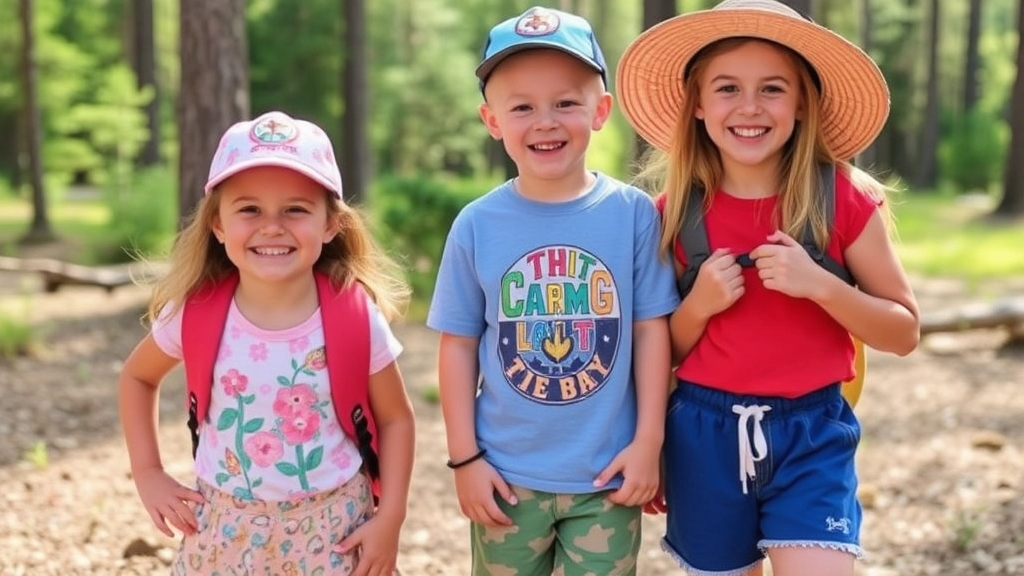
Ever been caught in a downpour with nothing but a T-shirt? Or shivering in the morning chill because you only packed shorts?
Yeah, that sucks.
Let’s make sure you’re ready for whatever Mother Nature throws your way at summer camp.
Plan for Hot Days
When it’s blazing hot, you need clothes that breathe and keep you cool.
Think:
- Lightweight T-Shirts: Go for cotton or moisture-wicking fabrics.
- Shorts: Comfortable and not too tight. You want to move freely.
- Sunglasses and a Hat: Protect your eyes and face from the sun.
Be Ready for Rain
Rain can turn a fun day into a soggy mess.
Here’s how to stay dry:
- Waterproof Jacket: A lightweight, packable one is best.
- Quick-Dry Trousers: Jeans will just get heavy and uncomfortable.
- Waterproof Shoes: Wet feet are the worst.
Cool Mornings and Evenings
Temperatures can drop when the sun goes down.
Stay warm with:
- Hoodie or Fleece: Easy to layer and take off as needed.
- Long Trousers: Keep the chill at bay without overheating.
- Beanie or Headband: Keep your head warm without too much bulk.
Mix and Match
You don’t need a whole wardrobe.
Just a few key pieces that you can mix and match:
- Layering: Start with a base layer, add a mid-layer, and top it off with a waterproof shell if needed.
- Versatile Items: Clothes that can be worn for different activities are a win.
Real Talk: What I Pack
When I pack for camp, I keep it simple but smart.
Here’s my go-to list:
- 3-4 T-Shirts
- 2 Pairs of Shorts
- 1 Pair of Quick-Dry Trousers
- 1 Waterproof Jacket
- 1 Hoodie
- 1 Pair of Waterproof Shoes
- Sunglasses and Hat
- Beanie or Headband
By planning your outfits according to the weather, you’ll stay comfortable and enjoy every moment of camp.
No more shivering in the morning or sweating buckets in the afternoon.
Just good times and great memories.
Packing Tips for a Hassle-Free Camp Experience
Ever packed for a summer camp and worried you might forget something crucial? Or maybe you’re just trying to avoid lugging around a suitcase that feels like it’s filled with rocks? Trust me, I’ve been there. Let’s break it down so you can pack like a pro and make your summer camp experience smooth and enjoyable.
Start with a Checklist
First things first, make a checklist. It sounds basic, but it’s a game-changer. Here’s a simple one to get you started:
- Clothing: T-shirts, shorts, long pants, underwear, socks
- Footwear: Sneakers, sandals, hiking boots
- Swimwear: Swimsuits, swim trunks, goggles
- Toiletries: Toothbrush, toothpaste, soap, shampoo
- Accessories: Hat, sunglasses, water bottle
Pack Smart, Pack Light
You don’t need to bring your entire wardrobe. Focus on versatile pieces that you can mix and match. Here’s how:
- Tops and Bottoms: Choose neutral colours that go with everything.
- Quick-Dry Fabrics: These are lifesavers. They dry fast and are usually lightweight.
- Layering: Pack a few layers for chilly nights or unexpected weather changes.
Use Packing Cubes
Packing cubes are a game-changer. They help you organise your stuff and make it easier to find things. Plus, they compress your clothes, giving you more space.
Roll, Don’t Fold
Rolling your clothes instead of folding them saves space and reduces wrinkles. It’s a small trick that makes a big difference.
Toiletries: Think Travel-Size
Don’t bring full-size bottles of shampoo and conditioner. Opt for travel-size versions. They’re lighter, take up less space, and you can always refill them if needed.
Footwear: One Pair for Each Activity
You don’t need a shoe store in your bag. Bring:
- Sneakers for general activities
- Sandals for casual wear
- Hiking boots if you plan on hitting the trails
Keep Essentials Accessible
Always keep your essentials in an easily accessible spot. Think:
- Sunscreen
- Insect repellent
- First-aid kit
- Water bottle
Use Ziplock Bags
Ziplock bags are your best friend. Use them to store:
- Wet clothes: Keeps your dry clothes from getting damp.
- Electronics: Protects them from water and dirt.
- Snacks: Keeps them fresh and organised.
Don’t Forget the Fun Stuff
Packing isn’t just about the essentials. Bring a few items that make camp more enjoyable:
- Books or e-reader
- Journal and pen
- Portable games
Final Check
Before you zip up that bag, do a final check. Make sure you’ve got everything on your checklist. Better safe than sorry.
For more tips on ensuring a smooth camp experience, check out our guide to fun and learning combined at summer camps and learn how to keep your cabin and bunk safe and well-designed.
Stylish Yet Functional: Balancing Fashion and Comfort
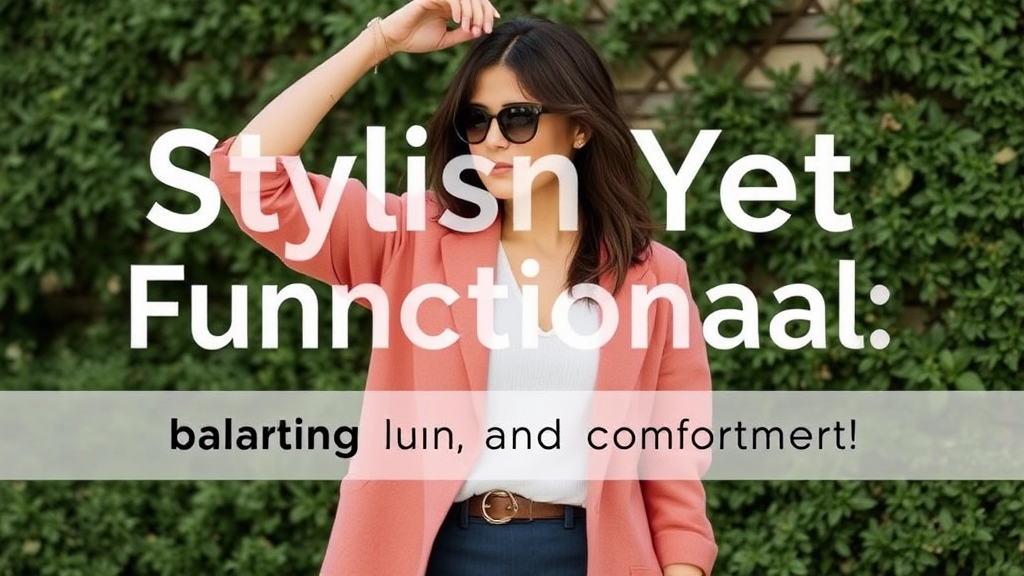
Ever wondered how to look good while staying comfy at summer camp?
We’ve all been there—wanting to impress but not at the expense of comfort.
Here’s the deal: you can have both style and functionality without breaking a sweat.
Why Balance Matters
When you’re at camp, you need clothes that can handle the adventure. But who says you can’t look good while doing it?
Key is: blend fashion with practicality.
Tips for Stylish Yet Functional Camp Wear
- Choose Breathable Fabrics: Opt for materials like cotton or linen. They’re light and keep you cool.
- Go for Versatile Pieces: Think T-shirts that can double as sleepwear or a lightweight jacket for chilly nights.
- Stick to Neutral Colours: They’re easy to mix and match. Plus, they hide dirt better.
- Accessorise Smartly: A funky hat or colourful bandana can elevate your look without sacrificing comfort.
Real Talk: What Works
I remember packing for my first camp. I was worried about looking like a fashion disaster. But then I realised it’s all about smart choices.
Example: I packed a pair of sturdy shorts that looked great but also had enough pockets for all my essentials.
Quick Tips for Packing
- Layer Up: Bring items you can layer. Weather can be unpredictable.
- Footwear: Stylish trainers that are also durable are a win-win.
- Quick-Dry Fabrics: Ideal for unexpected rain or sweat.
Quick-Dry and Moisture-Wicking Fabrics
Ever been drenched in sweat during a hike and felt like you’re carrying an extra layer of skin? Yeah, not fun. That’s where quick-dry and moisture-wicking fabrics come to the rescue. Trust me, these materials are game-changers for any summer camp experience.
Why Quick-Dry and Moisture-Wicking Fabrics Matter
Imagine this: You’re halfway through a thrilling hike, the sun is blazing, and you’re sweating buckets. Regular cotton T-shirts? They soak up sweat like a sponge and cling to your skin, making you feel heavy and uncomfortable. But quick-dry and moisture-wicking fabrics? They pull the sweat away from your body and dry in a flash, keeping you cool and light.
Benefits of Quick-Dry and Moisture-Wicking Fabrics
- Stay Dry and Comfortable: These fabrics wick away sweat, keeping you dry no matter how intense the activity gets.
- Lightweight and Breathable: They let your skin breathe, helping you stay cool even when the temperature rises.
- Fast Drying: Perfect for those unexpected rain showers or after a dip in the lake. Your clothes will be dry and ready to wear in no time.
- Odour Control: Some of these fabrics come with anti-microbial properties that help keep the stink at bay.
What to Look for in Quick-Dry and Moisture-Wicking Fabrics
When shopping for summer camp gear, keep an eye out for these key features:
- Material: Look for fabrics like polyester, nylon, or blends that specifically mention moisture-wicking properties.
- Fit: A good fit is essential. Too loose, and it won’t wick sweat effectively. Too tight, and it might restrict movement.
- Durability: Camps can be rough on clothes. Opt for high-quality fabrics that can withstand the wear and tear.
Real-World Example
Last summer, I packed a mix of regular cotton tees and moisture-wicking shirts for a week-long camp. By day two, the cotton shirts were relegated to the bottom of my bag. The quick-dry shirts? They were lifesavers, especially during those long, sweaty hikes and impromptu water fights.
Packing Tips for Quick-Dry and Moisture-Wicking Clothes
- Mix and Match: Pack a variety of tops and bottoms to mix and match. This way, you always have a dry set ready.
- Roll, Don’t Fold: Rolling your clothes saves space and reduces wrinkles.
- Laundry Hack: If you need to wash your clothes, quick-dry fabrics will be ready to wear by morning. Just hang them up overnight.
For more tips on preparing for a summer camp, check out our Summer Camp Starter Pack and learn how to make the most of your experience. Additionally, explore the Top Tips and Gear Essentials for Summer Camping to ensure you have everything you need for a successful trip.
Layering Techniques for Variable Weather Conditions
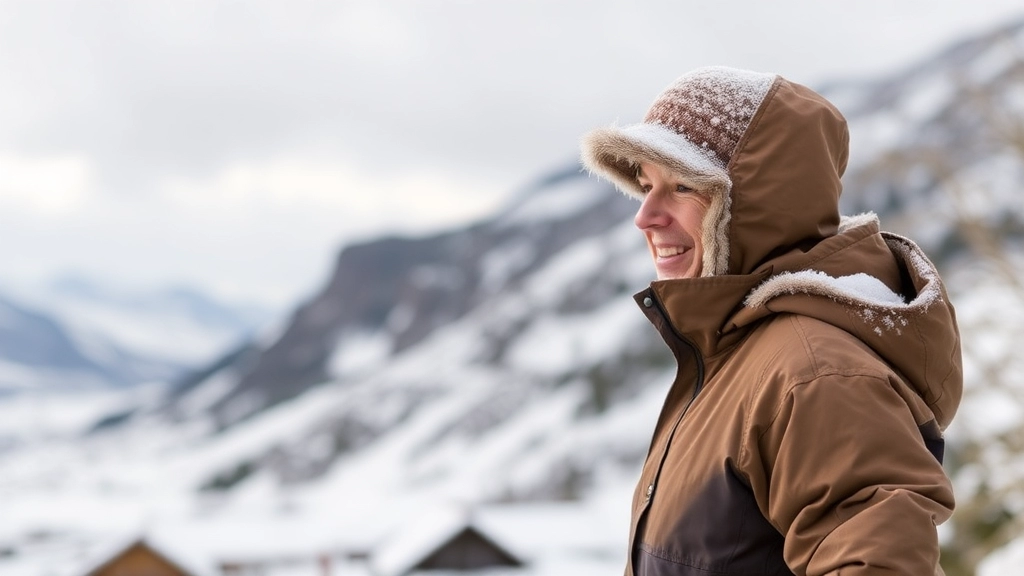
Ever been caught in a sudden downpour at camp?
Or maybe you’ve shivered through a chilly evening when the day started off blazing hot?
Yeah, me too.
That’s why mastering layering techniques for variable weather conditions is a game-changer.
Let’s dive in.
Why Layering Matters
Layering isn’t just for fashion.
It’s about staying comfortable, no matter what Mother Nature throws at you.
Think of it as your personal climate control.
Here’s how to nail it:
Base Layer: The Foundation
Start with a good base layer.
This is your first line of defence against the elements.
It should be:
- Moisture-Wicking: Keeps sweat off your skin.
- Breathable: Allows air to circulate.
- Lightweight: You don’t want to feel like you’re wearing a wetsuit.
Mid Layer: Insulation
Next up, the mid layer.
This is all about warmth.
Think:
- Fleece Jackets: Lightweight but warm.
- Wool Sweaters: Natural insulation.
- Down Vests: Compact and toasty.
Outer Layer: Protection
Finally, the outer layer.
This is your shield against wind and rain.
Look for:
- Waterproof Jackets: Keeps you dry.
- Windbreakers: Blocks the breeze.
- Breathable Fabrics: Prevents overheating.
Pro Tip: Adaptability is Key
The beauty of layering?
You can adjust as needed.
Getting too warm?
Shed a layer.
Feeling a chill?
Add one back on.
Real-Life Example
Picture this:
You’re on a morning hike.
It’s a bit chilly, so you start with all three layers.
By midday, the sun’s out, and you’re sweating.
Time to lose the mid layer.
By evening, the temperature drops again.
No worries, just pop that mid layer back on.
Layering for Different Activities
Different activities call for different approaches.
For hiking, focus on lightweight and breathable layers.
For water sports, quick-drying and waterproof materials are a must.
For campfire nights, cosy and warm layers will keep you comfortable.
Must-Have Swimwear for Camp Activities
Alright, let’s talk about swimwear for summer camp. You might be wondering, “What kind of swimwear do I actually need?” or “How many swimsuits should I pack?” These are legit concerns, and I’m here to break it all down for you.
Why the Right Swimwear Matters
First off, picking the right swimwear isn’t just about looking good; it’s about feeling comfortable and ready for anything. Whether you’re diving into a lake, hitting the pool, or just soaking up the sun, the right gear makes all the difference.
Key Features to Look For
When choosing swimwear, consider the following:
- Comfort: You don’t want anything too tight or too loose. It should fit just right.
- Durability: Camp activities can be rough. Go for materials that can withstand chlorine, saltwater, and a bit of rough play.
- Quick-Drying: No one likes sitting around in a wet swimsuit. Quick-dry fabrics are a lifesaver.
- Sun Protection: Some swimwear comes with built-in UV protection. It’s a great way to shield your skin from harmful rays.
Types of Swimwear
Here’s a quick rundown of the types of swimwear you might consider:
- One-Piece Suits: Great for full coverage and staying put during active water games.
- Two-Piece Suits: Offers flexibility and can be mixed and matched.
- Rash Guards: Perfect for extra sun protection and avoiding rashes from surfboards or other water equipment.
- Board Shorts: Ideal for both swimming and hanging out by the water.
How Many Should You Pack?
A good rule of thumb is to pack at least two to three swimsuits. This way, you always have a dry one ready to go. Trust me, there’s nothing worse than having to put on a damp suit.
Real Talk: My Camp Swimwear Fiasco
Let me share a quick story. Once, I packed only one swimsuit for a week-long camp. Big mistake. After the first day, it was constantly wet, and I had no backup. Lesson learned: always pack extra.
Additional Swimwear Accessories
Don’t forget these essentials:
- Swim Cap: Keeps your hair dry and out of your face.
- Goggles: Essential for underwater activities.
- Water Shoes: Protect your feet from sharp rocks or hot sand.
- Towel: Quick-dry towels are compact and efficient.
For more tips on how to make the most out of your camp experience, check out our guide on maximizing your basketball summer camp experience. And if you’re looking for a camp that combines fun and learning, don’t miss our review of Primrose Summer Camps.
Personal Hygiene and Care Items for Camp
Ever wondered what personal hygiene and care items you really need for summer camp?
Let’s break it down.
Why Hygiene Matters at Camp
Summer camp is fun, but let’s face it: it can get messy.
You want to stay fresh and clean, right?
Essential Hygiene Items
Here’s a list of must-haves:
- Toothbrush and Toothpaste: No one wants bad breath.
- Shampoo and Conditioner: Keep your hair clean and untangled.
- Body Wash or Soap: A bar of soap or a travel-sized body wash works wonders.
- Deodorant: Trust me, you’ll need it.
- Towel and Washcloth: Quick-dry options are your best bet.
Extra Care Items
To really stay on top of your game:
- Sunscreen: Protect your skin from those harsh UV rays.
- Bug Spray: Mosquitoes are relentless.
- Hand Sanitiser: For when soap and water aren’t available.
- Lip Balm: Dry, cracked lips? No thanks.
- Wet Wipes: For a quick freshen-up.
Pro Tips for Packing Hygiene Items
- Travel-Size Everything: Save space and weight.
- Leak-Proof Bags: Prevent spills in your backpack.
- Label Your Stuff: So it doesn’t get mixed up with someone else’s.
Real Talk: Stories from Camp
I remember my first camp.
I forgot to pack deodorant.
Big mistake.
Trust me, you don’t want to be that person. For more tips on how to prepare, check out our Summer Camp Starter Pack. And if you’re curious about the overall experience, don’t miss our guide on Summer Camp Culture and Activities.
FAQs: Summer Camp Outfits
What should I consider when choosing footwear for summer camp?
Prioritize comfort, durability, and suitability for camp activities. Trainers, hiking boots, and sandals are recommended for different terrains and purposes.
Why is it important to pack multiple pairs of shoes?
Having multiple pairs ensures you’re prepared for various activities and weather conditions, preventing discomfort like wet or blistered feet.
What clothing is best for hot summer days at camp?
Opt for lightweight T-shirts, shorts, and accessories like sunglasses and a hat to stay cool and protected from the sun.
How can I stay dry during rainy camp days?
Pack a waterproof jacket, quick-dry trousers, and waterproof shoes to keep yourself dry and comfortable.
What are some tips for staying warm during cool mornings and evenings?
Layer with a hoodie or fleece, long trousers, and a beanie or headband to maintain warmth without overheating.
How can I balance style and functionality in my camp outfits?
Choose breathable fabrics, versatile pieces, and neutral colors that are easy to mix and match while staying comfortable.
What is the best way to layer clothes for variable weather conditions?
Use a base layer for moisture-wicking, a mid layer for insulation, and an outer layer for protection against wind and rain.
Why is adaptability important in layering?
Layering allows you to adjust your clothing according to changing weather conditions, ensuring comfort throughout the day.
What are some essential clothing items to pack for camp?
Consider packing 3-4 T-shirts, 2 pairs of shorts, 1 pair of quick-dry trousers, a waterproof jacket, a hoodie, waterproof shoes, sunglasses, and a hat.
References
-
Expert Advice on Choosing Hiking Boots
-
Guide to the Best Hiking Boots
-
Footwear Tips for Camping

